Jogashima Island

Tucked away at the tip of the Miura Peninsula, which is between Kamakura and Yokohama, are two of Kanagawa Prefecture's best kept secrets: Jogashima Island and Misaki Port. Separated by approximately 300 meters of water, Misaki Port is famous for its tuna and quaint port town, while Jogashima Island offers excellent coastal scenery and outdoor activities. The island, which has a circumference of only four kilometers, and the port are less than two hours by train and bus from central Tokyo and even closer from central Yokohama, making them an attractive day trip from the major cities.
I visited both Jogashima Island and Misaki Port in a day trip. A combination of train and bus took me to Jogashima first, where I explored the island from east to west on foot, then I took the ferry to Misaki Port and walked around the town, and finally took the bus back to the train station. Detailed transport information can be found in the access section below.
Despite its diminutive size, Jogashima Island offers two lighthouses, a wild and rugged coastline that allows for good fishing opportunities, walking trails that lead through seasonal flower gardens in the interior of the island or along the coastline, and migratory Japanese Cormorants visit during the winter months to build their nests on the sea cliffs. In fact, Jogashima Island is ranked as a 2-star destination in the Michelin Green Guide, which means it is worth making a detour to visit.
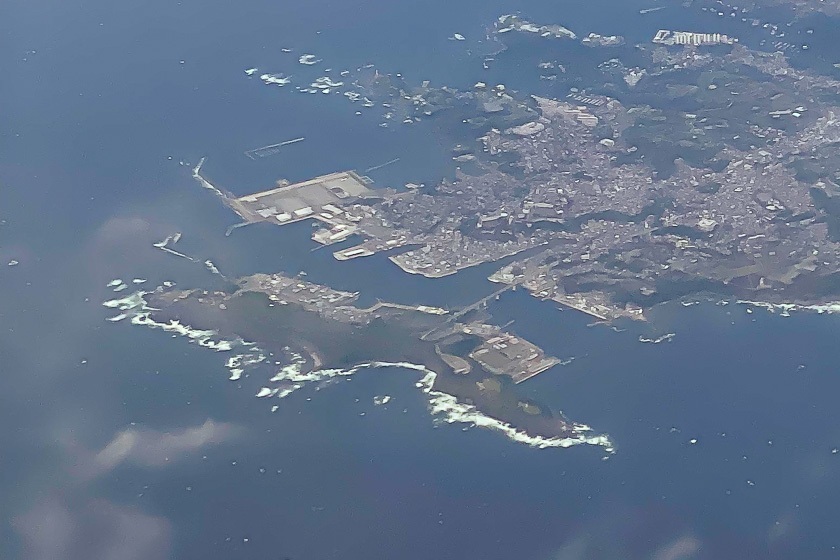

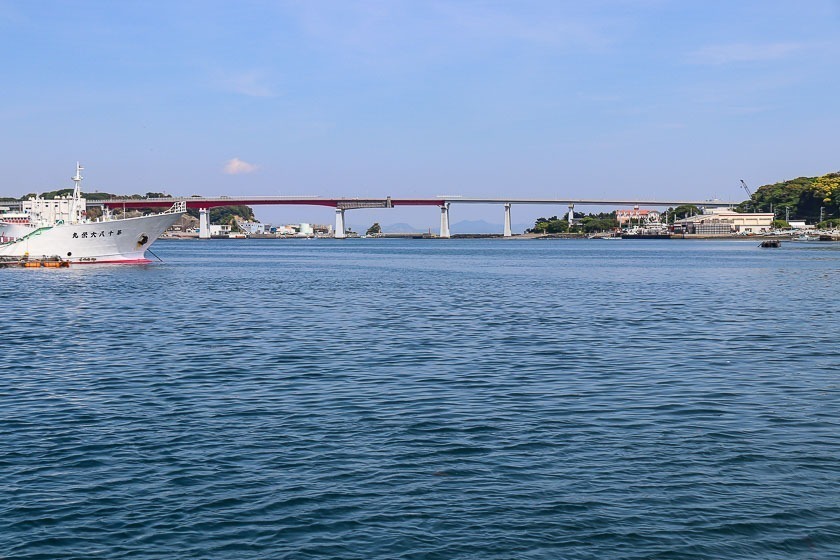
I took the bus from Misakiguchi Station and got off at Hakushuhi-mae bus stop on the eastern side of the island. From there, I made my way to Jogashima Park, a large park with the beautiful Awasaki Lighthouse its the eastern end. The park itself was very spacious with numerous benches to sit and rest, large grassy lawns to picnic on, and short trails from which visitors could go down to sea level. From the lighthouse, walking trails descend to the rugged coastline from where one can walk to the former location of the lighthouse or wander as far as the rocks and tide allow.
After exploring the eastern end of the island, I followed the walking trail along the southern end of the island to the Umanose sea cave, passing the Umiu observation deck along the way. Unfortunately, it was past the migratory season for the Japanese Cormorants (Umiu), who arrive from the Kuril Islands every November and stay until April the following year, when I visited, and there were no umiu for me to spot from the lookout point. I continued along the inland trail from the observation deck until I reached some signs and a flight of stairs leading to the Umanose sea cave, which I followed down.
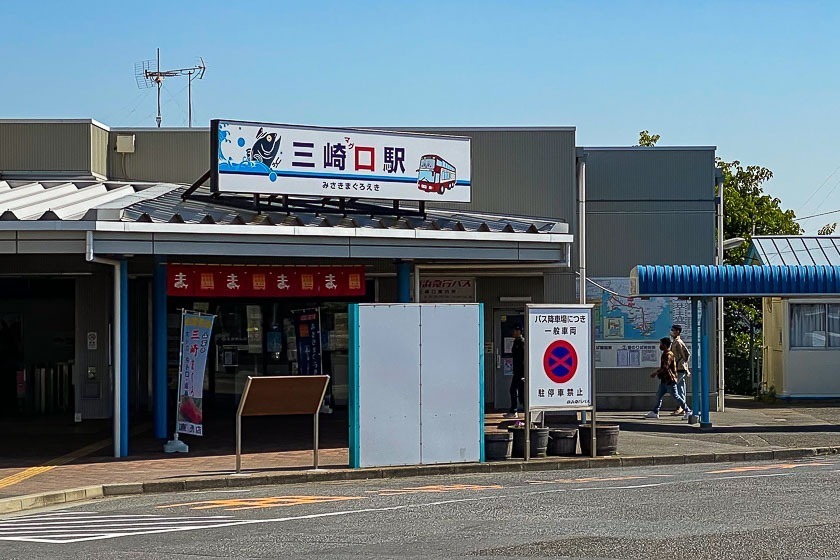

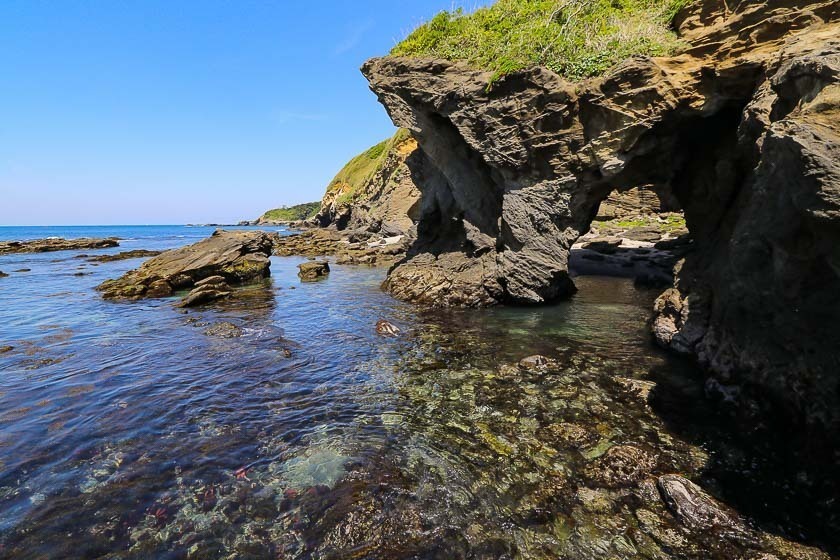
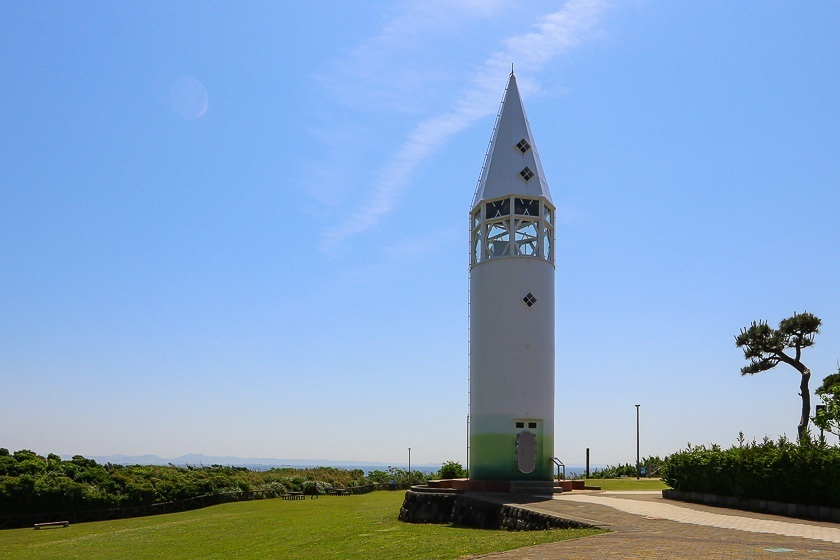

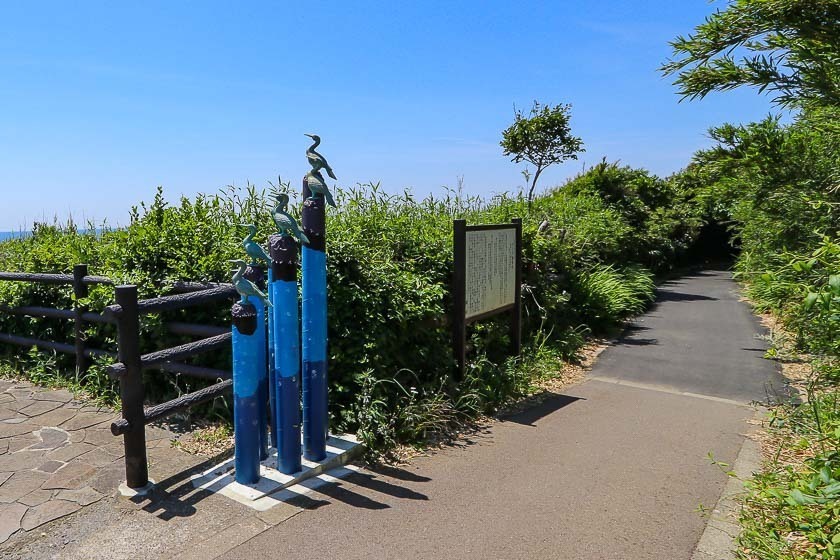
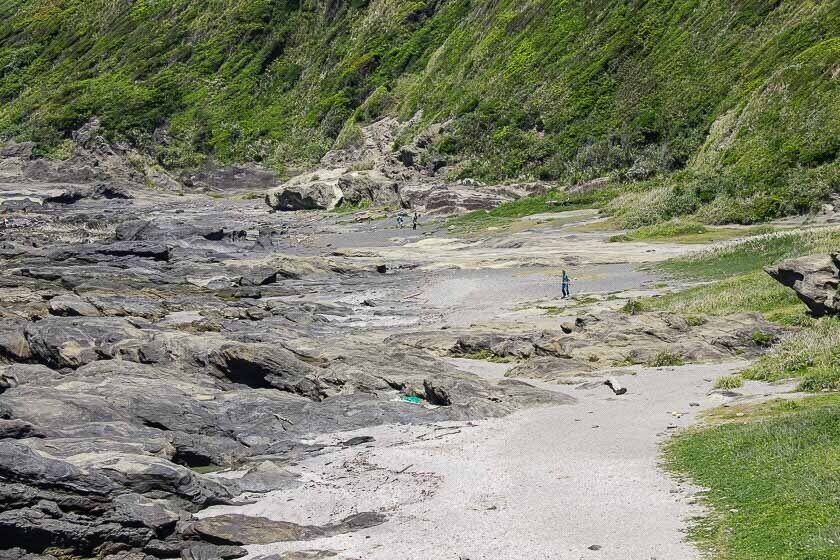
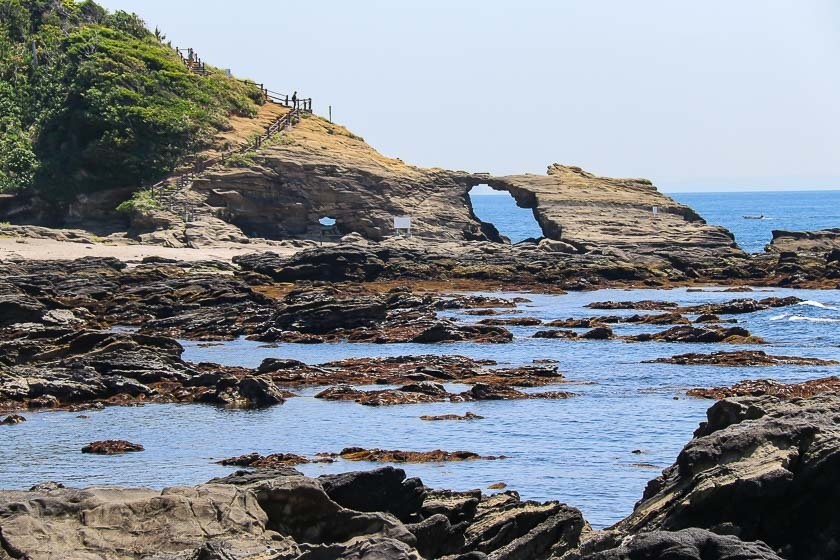
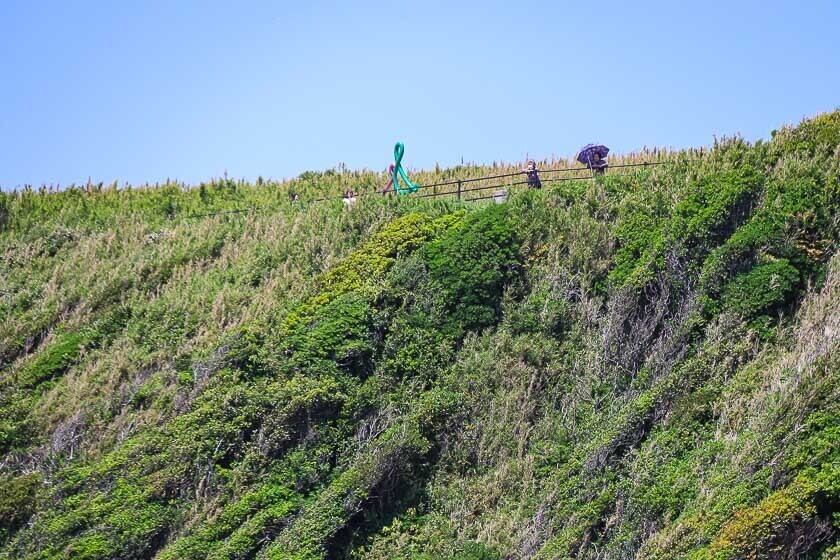
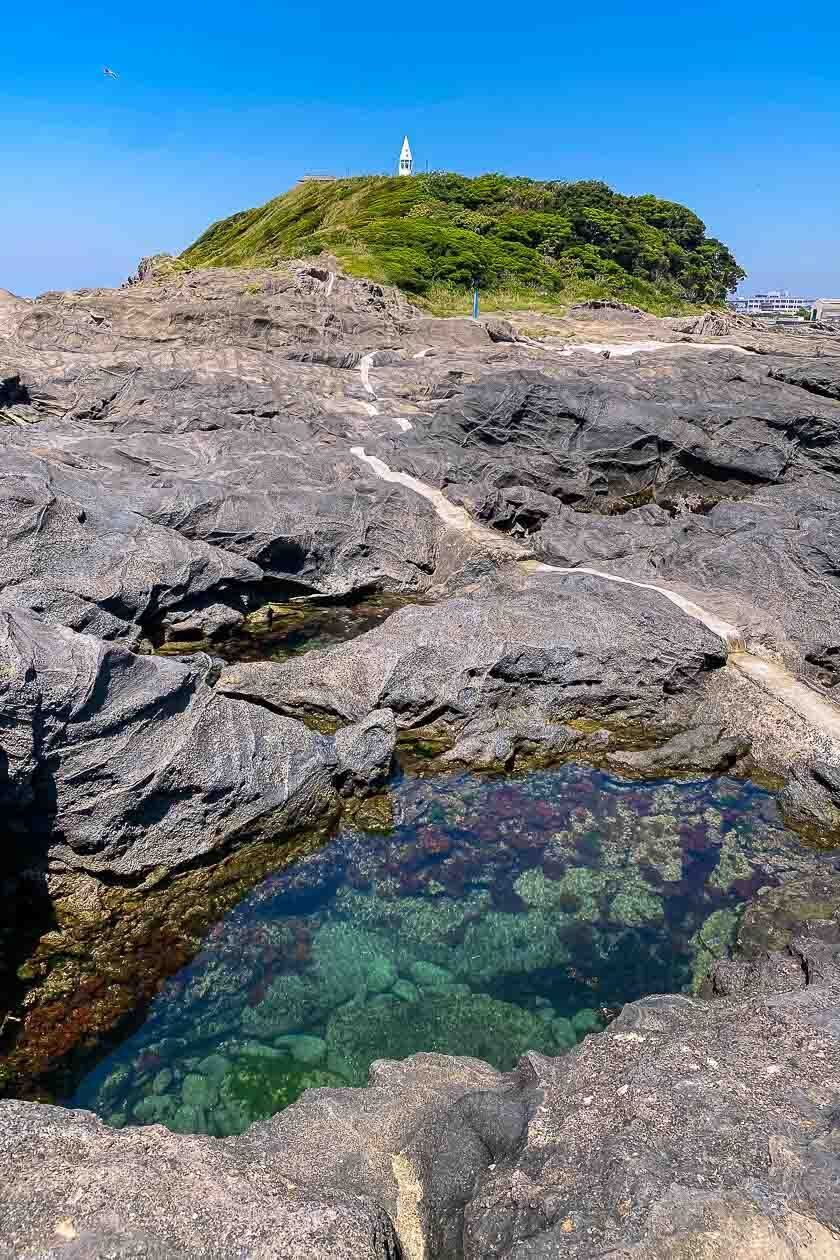
Instead of returning up the stairs after seeing the sea cave to continue on the inland trail, I kept walking along the beach towards the Jogashima Lighthouse, which I could see in the distance. The coastal walk proved interesting as I got to inspect the rock pools and rock formations up close, as well as pick at the shells on the beach. There were also a number of people fishing the rock edges, but it seemed pretty scary to me as all I could see were the waves crashing on the rocks and worried that those fishing there might be swept out to sea.
About 2.5 hours after arriving on Jogashima, I reached the main part of the island where restaurants, some accommodation and the main shopping street are located. I decided that lunch was in order, and went to one near the base of Jogashima Lighthouse. Tuna is a local specialty on Jogashima as well as in Misaki Port, and that was what I ordered for lunch. Actually, 90 percent of the menu, including the daily specials, contained tuna, so there was no escaping it :P

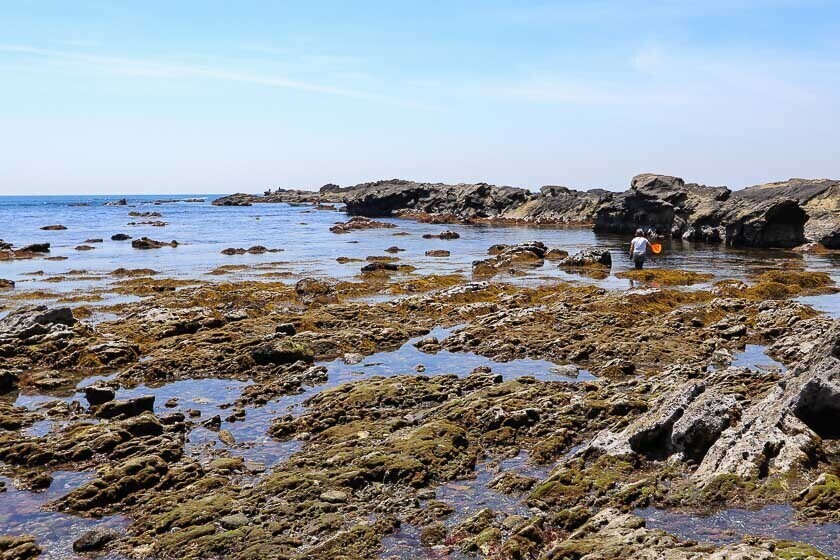

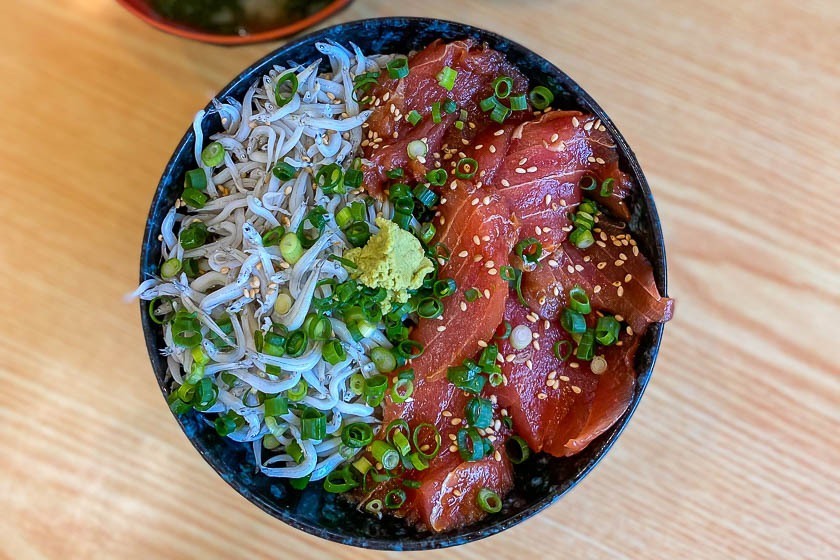
After lunch, I explored the western end of Jogashima, including walking to Jogashima Lighthouse and the supposed shopping street which had more closed shops than open ones. I considered the possibility that perhaps I visited on the one day of the week all the shops were shut. Regardless of the lack of open shops, there seemed to be more opportunities to enjoy views of Mount Fuji on the western side of the island without having to walk too far out.
Before taking the local ferry out of Jogashima, I walked a little along the northern end of the island, which faces Misaki Port. Unlike the coastal views of the south, the northern end provided more urban views of the residences on both the island and the mainland, as well as numerous fishing boats.
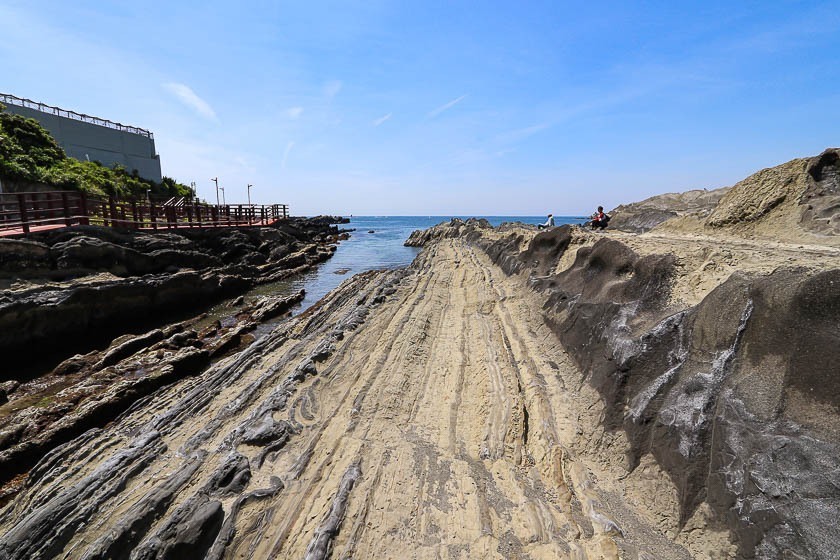
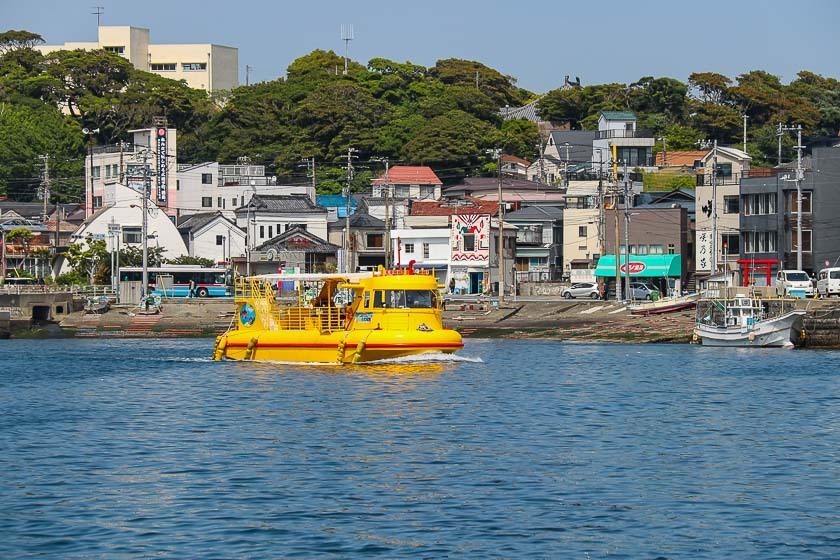
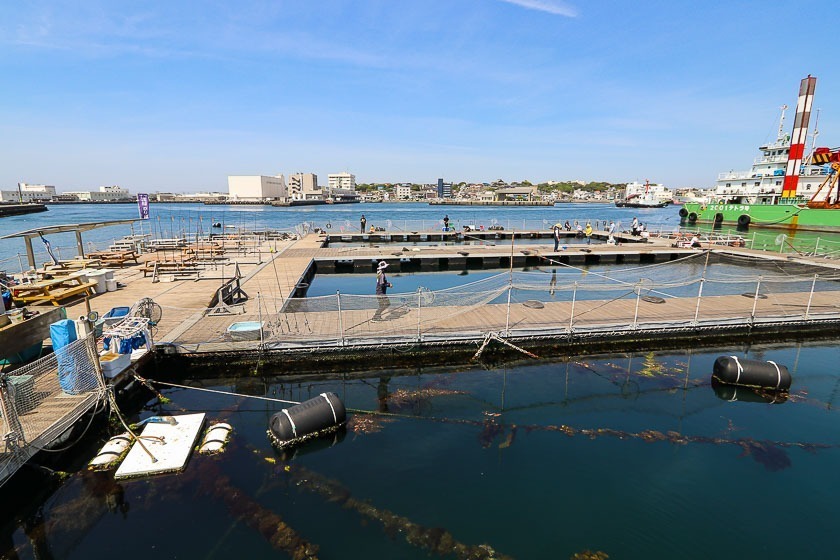
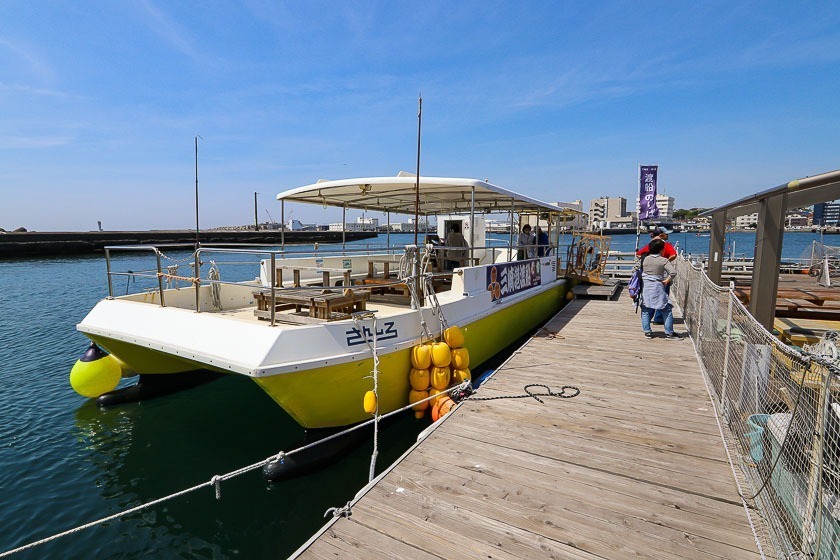
The ferry took me across the waters in a blink of an eye, and I found myself back on the mainland of the Miura Peninsula after spending just over four hours exploring Jogashima Island on foot. Over at Misaki Port, I visited Urari Market, the large building beside which the ferry docked. The two story market consists of a tuna market, where shops sell different parts of the tuna both frozen and thawed, and cooked foods containing tuna, on the first floor, and a local produce market on the second floor. Sadly, I had to pass on buying anything that required refrigeration as I was taking public transport.
After walking around the market, I went off to explore the quaint port town on foot. The narrow and windy streets gave the town a lot of character, and I loved that many of the shops still retained their old-fashioned shop fronts, which reminded me of the Japan in the mid 1900s. As a matter of fact, there are four old-Japanese style homes in Misaki - the oldest is said to be over 200 years old - which have been renovated to install modern conveniences and are available for overnight stays. All the homes boast grand entrances, and I mistook them for private residences.
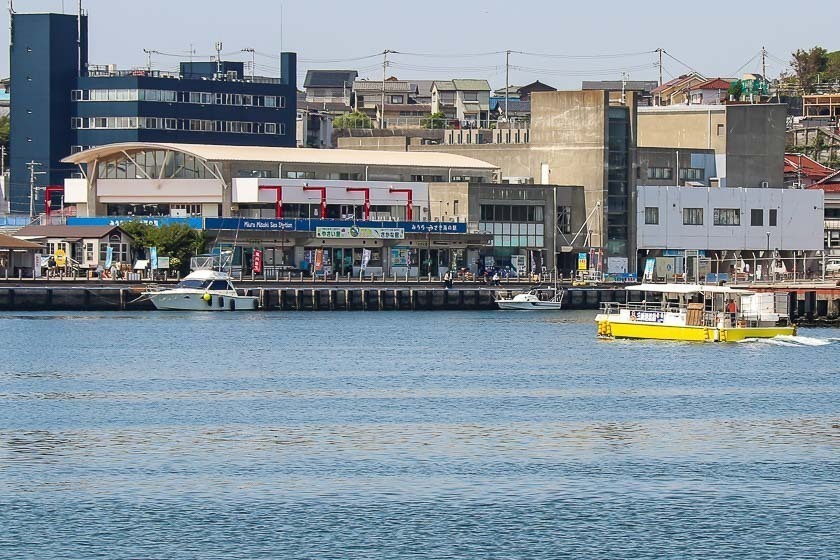
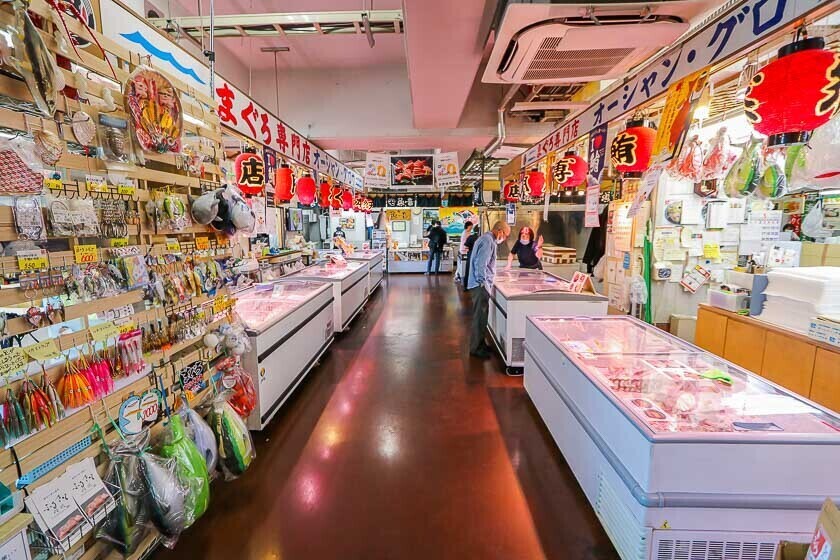
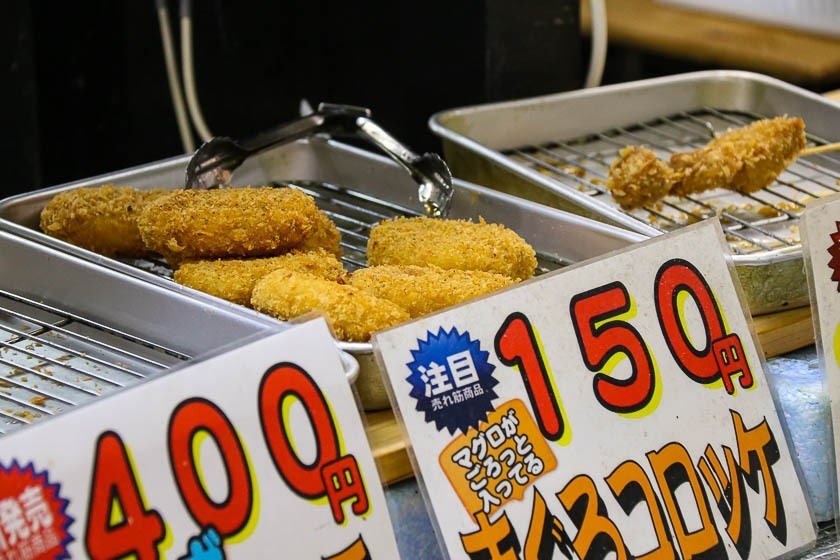
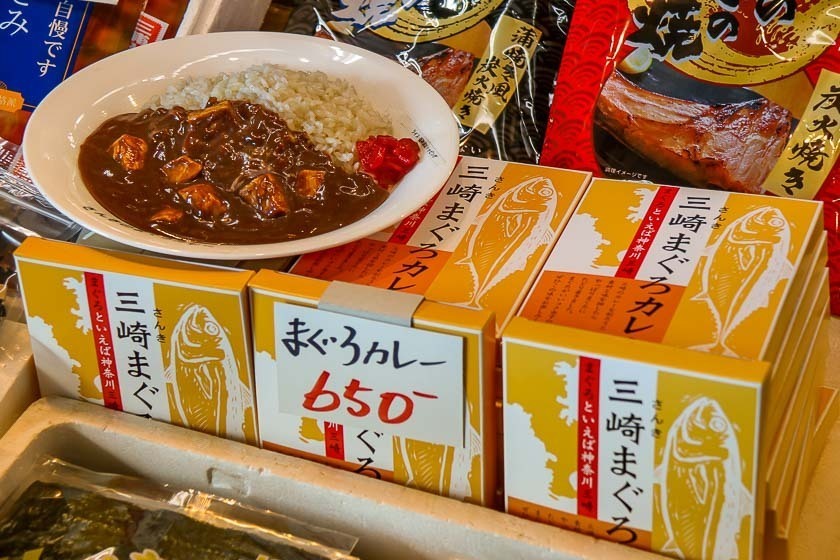
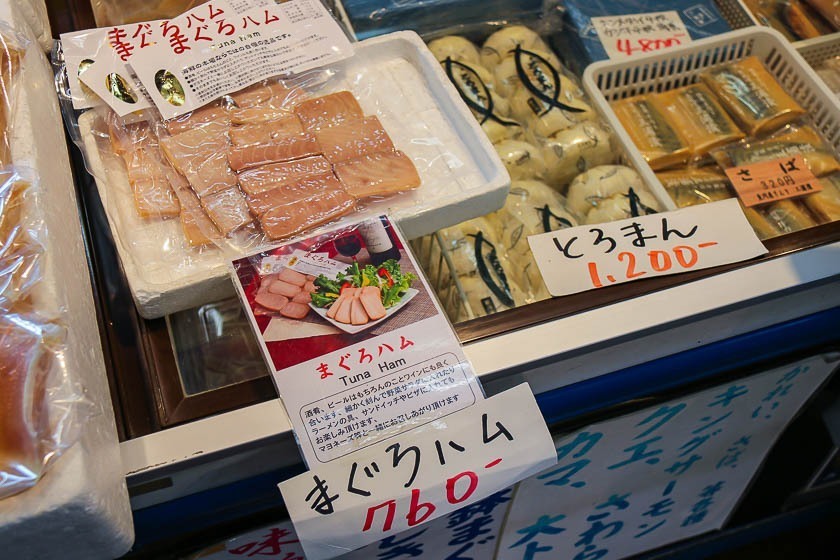
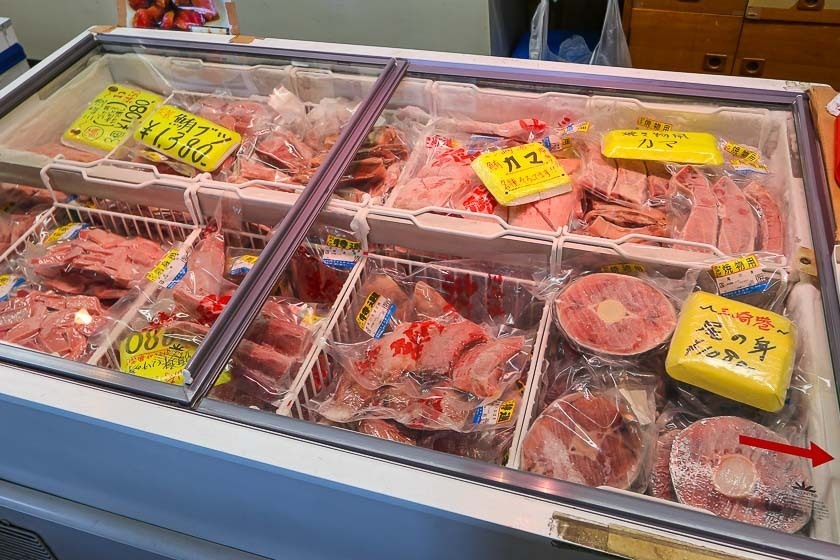
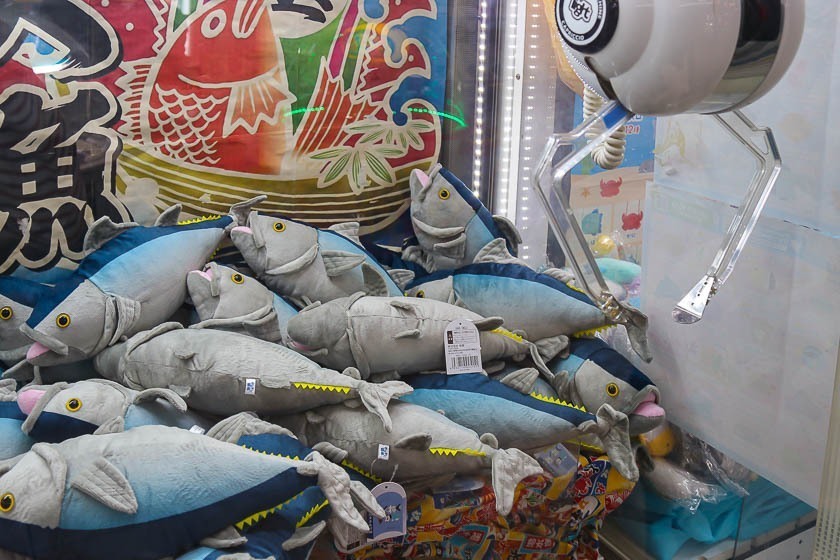
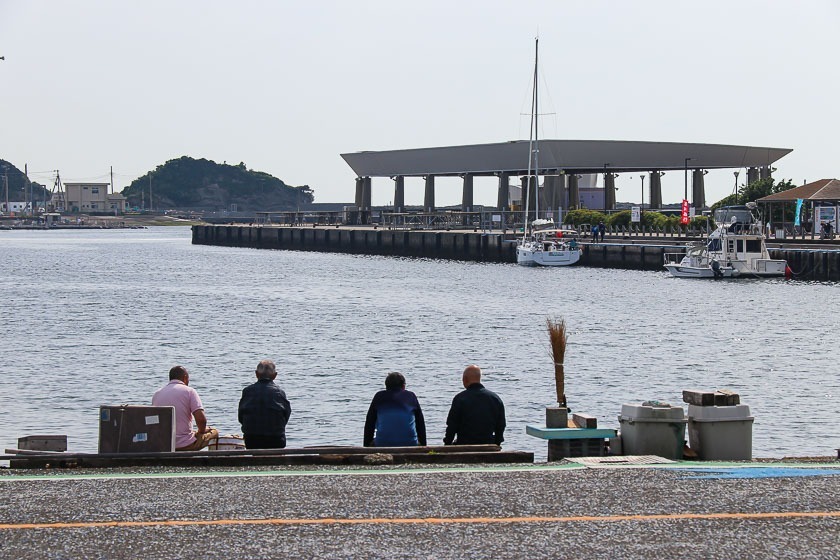
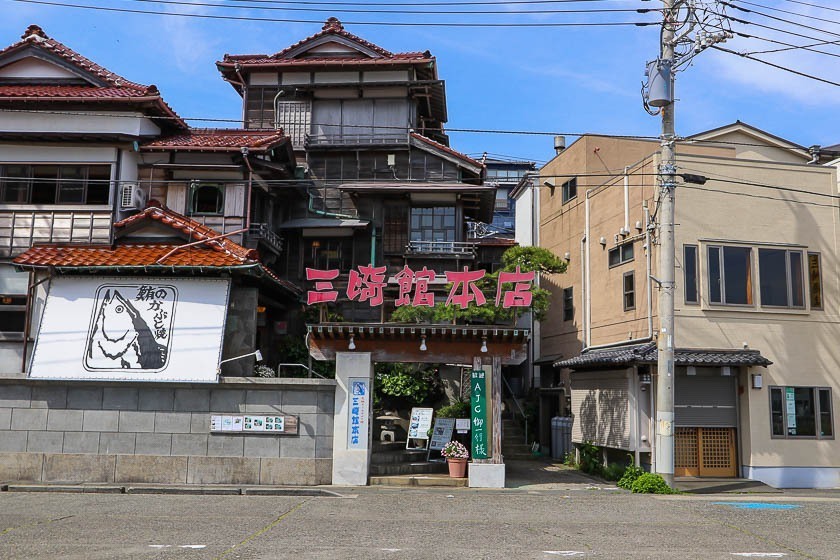
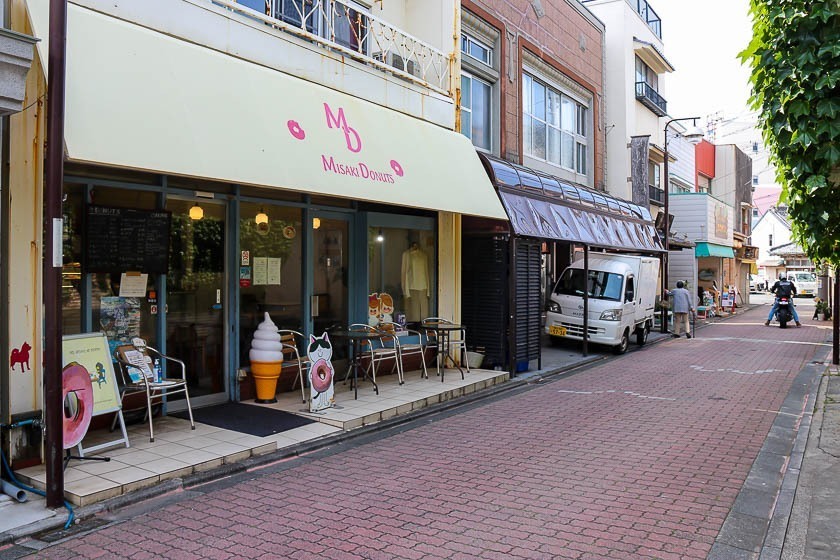
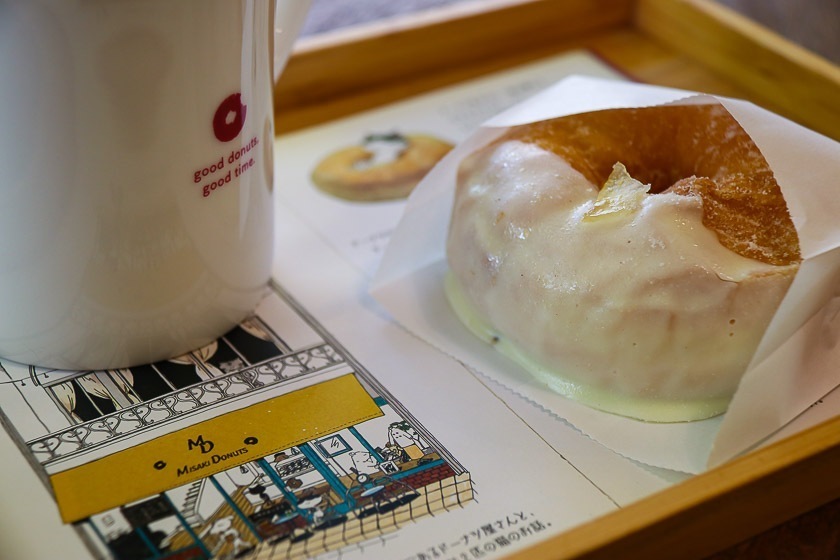
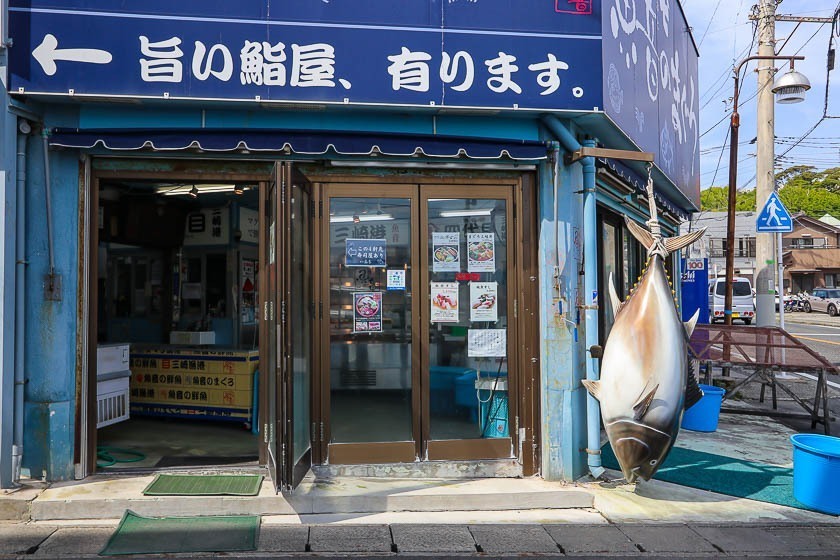
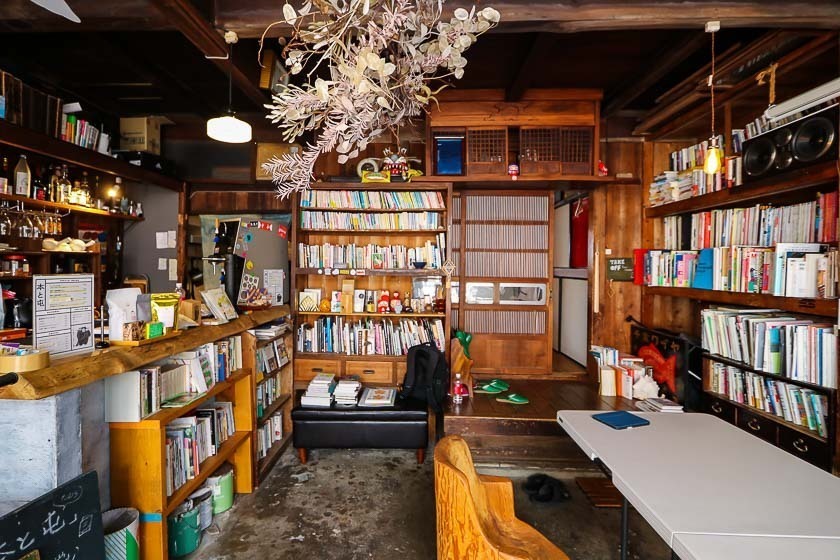
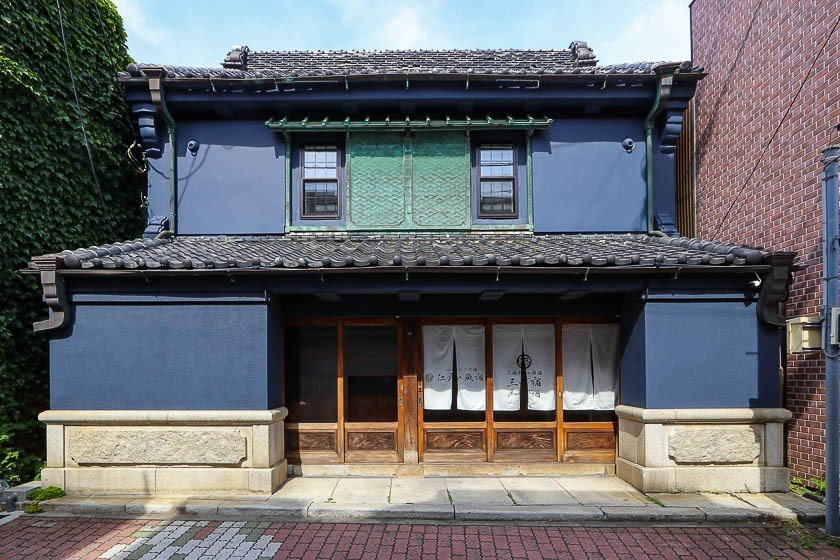
One unique and unexpected find in Misaki Port was a mezcal bar and restaurant right by the waterfront, which is run by a female proprietress. Mezcal is a Mexican distilled alcoholic drink made only from the agave plant - tequila can be said to be a type of mezcal - and has an alcohol content of 35-55 percent. The shop certainly felt out of character for me after seeing the old and quaint port town, but I was glad I took the chance and went in. The proprietress was extremely knowledgeable and stocked a wide variety of mezcal in the shop, rivaling even the best mezcal bars in Tokyo.
I was glad the bus stop to Misakiguchi Station was just across from the mezcal shop, as it meant that I could hang out till the last minute before catching the bus to the station. It was a fulfilling day out for me at the tip of the Miura Peninsula, exploring the rugged Pacific coastline, catching views of Mount Fuji, and eating and drinking the local specialties. I found it hard to believe that I could experience a small town and island vibes in just an hour from a major city, but I did, and I will definitely go again!
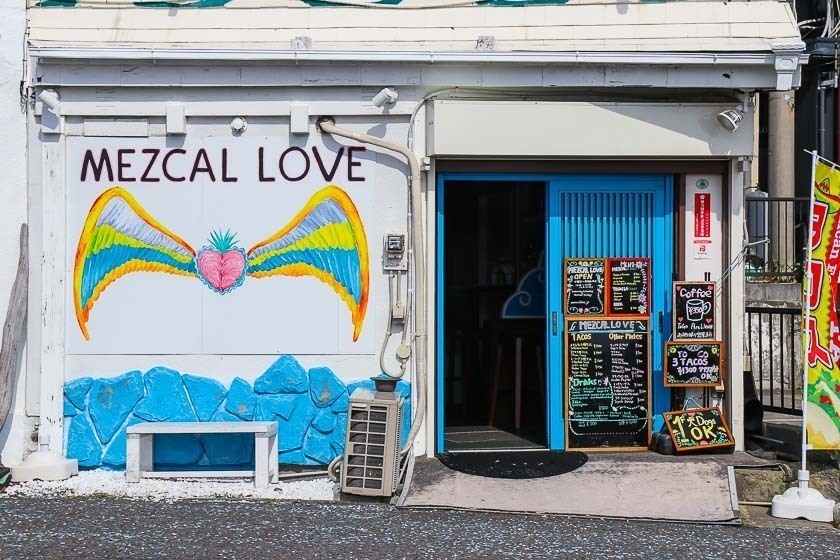
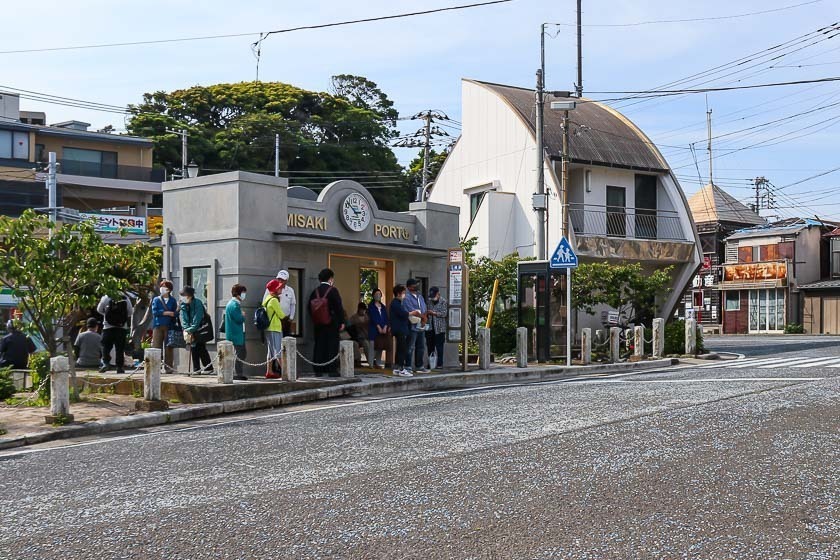
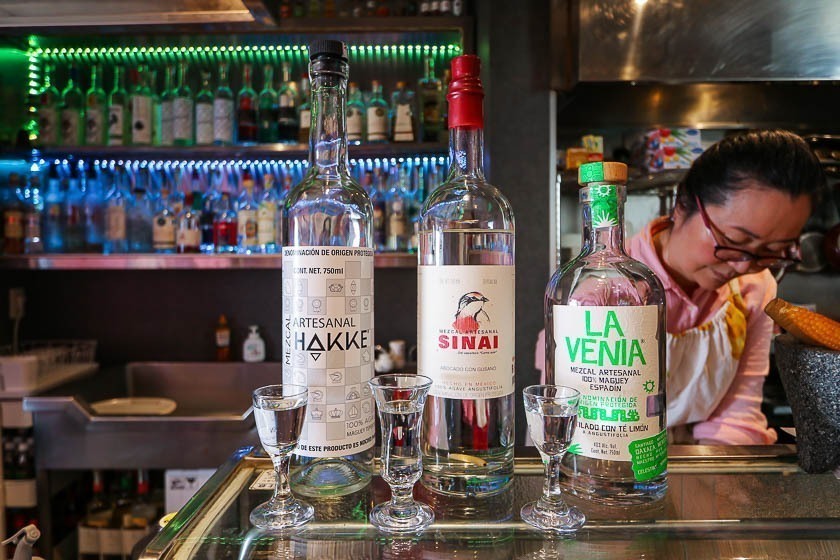
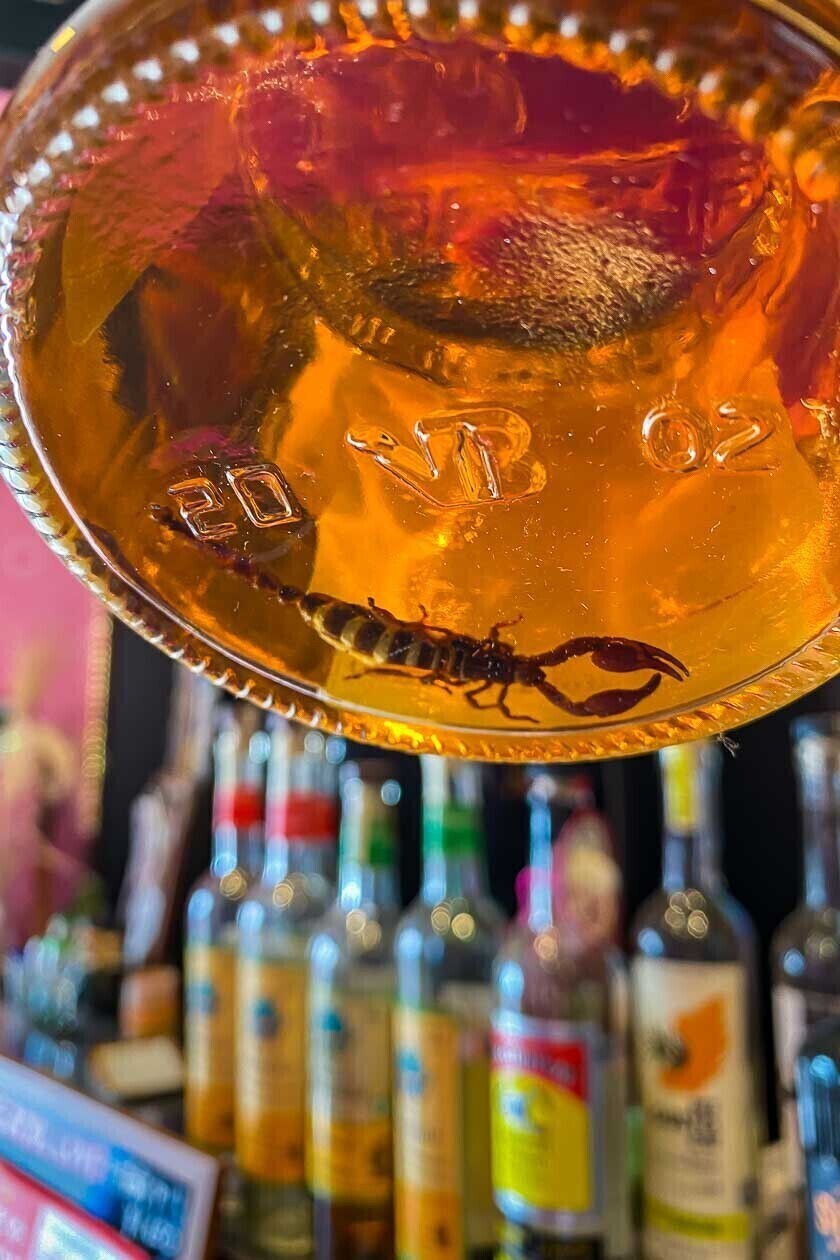
Getting There and Around
Jogashima is best accessed by bus from Misakiguchi Station, one of the terminals of the Keikyu Railway and the closest train station to Jogashima. From Shinagawa Station in central Tokyo, take a Keikyu train bound for Misakiguchi and get off at the terminus (about 75 minutes, 950 yen one way, frequent departures). Trains also stop at Yokohama Station along the way (50 minutes, 580 yen one way to Misakiguchi from Yokohama).
From Misakiguchi Station, take the Keikyu bus bound for Jogashima (2-3 buses per hour). The bus stops at Misakiko (Misaki Port on the mainland, 15 minutes, 310 yen one way), Hakushuhi-mae on the eastern side of Jogashima (25 minutes, 360 yen one way) and Jogashima, the terminal on the western side of the island (30 minutes, 400 yen one way).
A local ferry connects J's Fishing on the western end of Jogashima to Urari Market in Misaki Port on the mainland. The one way journey takes about five minutes and costs 500 yen. There is one ferry departure every 1-2 hours, and it is recommended to check the schedule beforehand. Note also that the ferry may be cancelled due to bad weather or mechanical issues.




